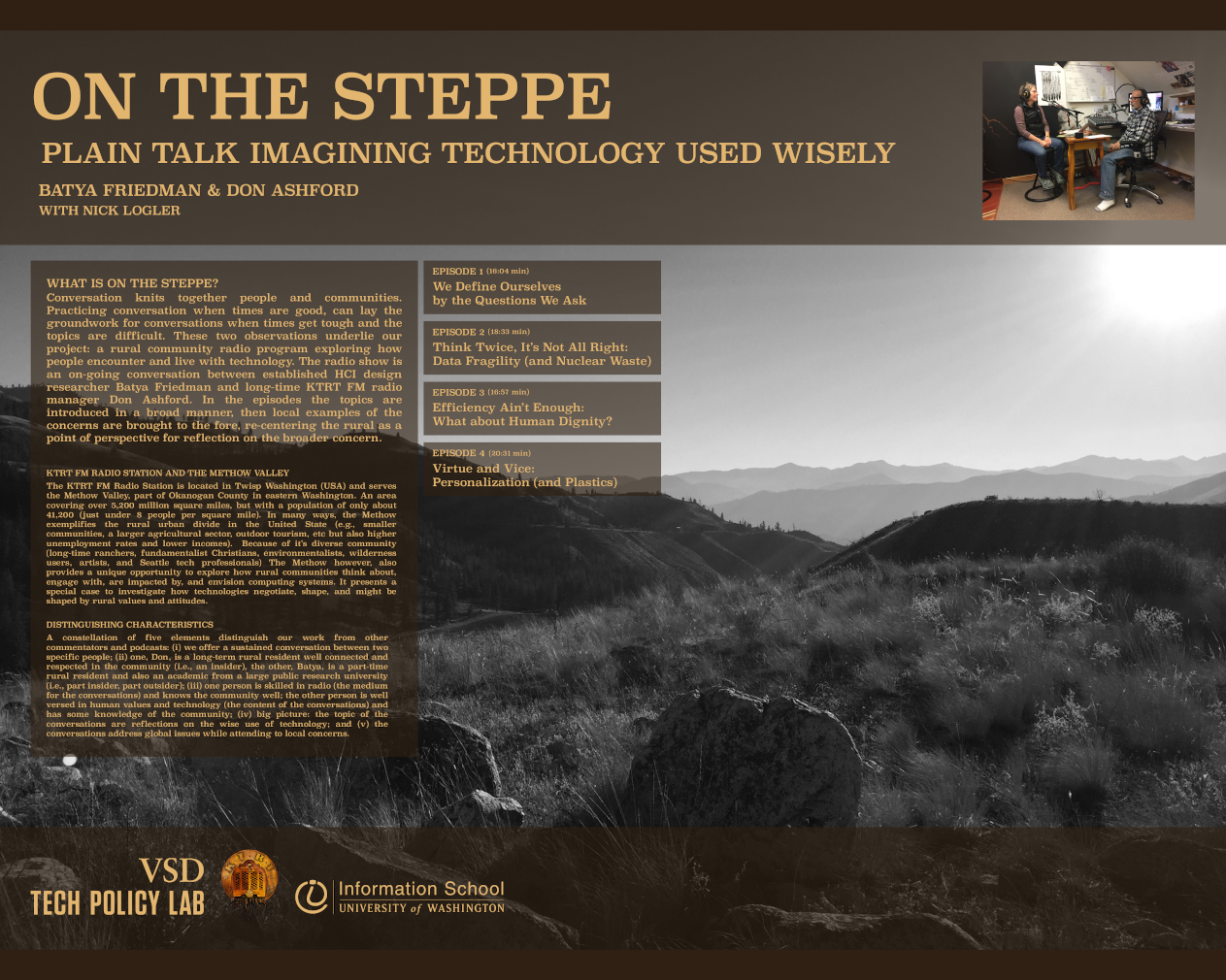
On the Steppe: Plain Talk Imagining Technology Used Wisely
Conversation knits together people and communities. Practicing conversation when times are good can lay the groundwork for conversations when times get tough and the topics are difficult. These two observations underlie our project: a rural community radio program exploring how people encounter and live with technology. The radio show is an ongoing conversation between established HCI researcher Batya Friedman and long-time KTRT FM manager Don Ashford. In the episodes the topics are introduced in a broad manner, then local examples of the concerns are brought to the fore, re-centering the rural as a point of perspective for reflection. Episodes are available at techpolicylab.uw.edu.
Batya Friedman
Don Ashford
Projects in Human-Computer Interaction
- Leveraging Collaborative Filtering for Personalized Behavior Modeling: A Case Study on Depression Detection among College Students
- On the Steppe: Plain Talk Imagining Technology Used Wisely
- Using Everyday Routines for Understanding Health Behaviors
- When Screen Time Isn’t Screen Time: Tensions and Needs Between Tweens and Their Parents During Nature-based Exploration
- Falx: Synthesis-Powered Visualization Authoring
- What Makes People Join Conspiracy Communities? Role of Social Factors in Conspiracy Engagement
- Visually Encoding Personal Data for Vulnerable Populations
- Who Are You Asking?: Qualitative Methods for Involving AAC Users as Primary Research Participants
- Where Are My Parents?: Information Needs of Hospitalized Children
- Parenting with Alexa: Exploring the Introduction of Smart Speakers on Family Dynamics
- “Eavesdropping”: An Information Source for Inpatients
- Detecting Depression and Predicting its Onset Using Longitudinal Symptoms Captured by Passive Sensing: A Machine Learning Approach With Robust Feature Selection
- Mobile Assessment of Acute Effects of Marijuana on Cognitive Functioning in Young Adults: Observational Study
- Telling Stories: On Culturally Responsive Artificial Intelligence
- What Makes People Join Conspiracy Communities?: Role of Social Factors in Conspiracy Engagement
- Early adopters of a low vision head-mounted assistive technology
- Being (In)Visible: Privacy, Transparency, and Disclosure in the Self-Management of Bipolar Disorder
- Visualizing Personal Rhythms: A Critical Visual Analysis of Mental Health in Flux
